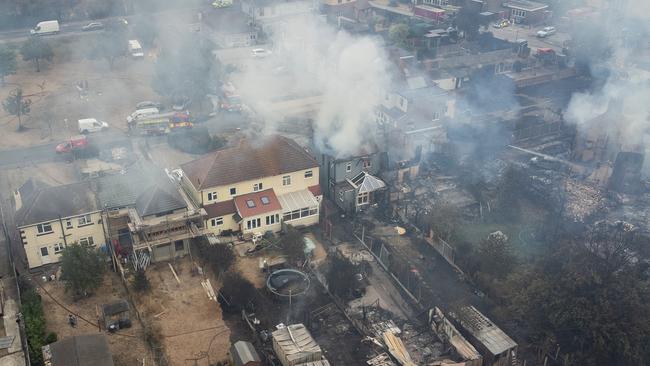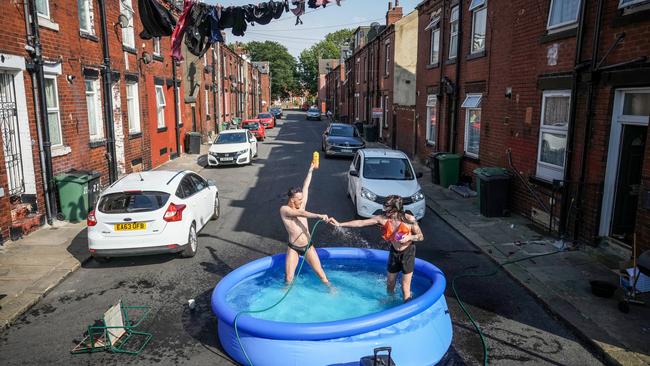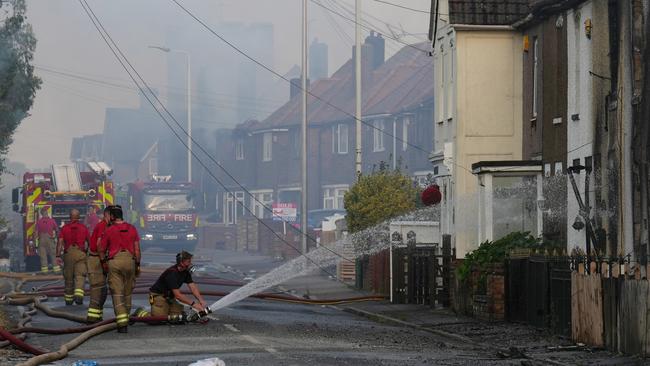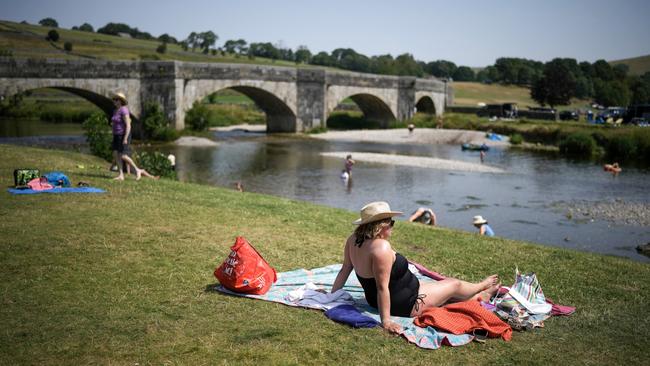England heatwave: New record maximum temperatures as fires destroy homes outside London
Homes destroyed by fire on the outskirts of London as several towns record maximum temperatures in excess of 40C.

Fires destroyed homes on the outskirts of London on Tuesday as the United Kingdom melted under record breaking temperatures, with the mercury topping 40C in several towns.
Both the London Fire Brigade and the Leicestershire Fire and Rescue Service declared major incidents as they battled fires in multiple locations where life and property were under direct threat.
In England, at least 29 meteorological observation sites exceeded the former maximum UK record of 38.7C.
St James Park in central London and Heathrow both reached 40.2C, with the highest recorded temperature of 40.3C recorded in Coningsby in Lincolnshire.

The Scottish record was also eclipsed, with a new heat record of 34.8C set at Charterhall on the Scottish Borders.
Unlike in Australia, where fire bans are often implemented during high temperatures, such measures were not put in place in the UK, leading to some fires being sparked from portable charcoal barbecues.
Late Tuesday, the Mayor of London, Sadiq Khan, urged people to change their routine and “not be tempted to have fun”, telling Sky News it was “a really difficult time”. He told people to refrain from having barbecues for the next two days and also asked people not to cool off in the Thames, as it was putting added pressure on emergency services personnel, who were dealing with five-fold the normal number of calls. A 14-year-old boy died in the Thames on Monday and his friend required rescuing, just one of more than a dozen drownings attributed to the heatwave.
“We need to take pressure off the fire service in the next 24 hours,’’ Mr Khan said, as he blamed climate change for the crisis.

One resident in Wennington, in outer London, described being evacuated as at least eight terrace houses and a church in her community were totally destroyed when a grass fire front engulfed the street. Locals tried to direct horses to safety as residents were told to flee without taking any possessions.
Lynn Sabberton described how a policeman carried her ill partner from the house. She said he had chronic obstructive pulmonary disease, a lung condition.
“He can’t breathe, he is not allowed out of the house, and he is panicking so the police officer got hold of him and got him out the house and shut the door,’’ she said, adding, “he is not very good at the moment, he didn’t have time to bring his inhaler with him.’’
London Fire Brigade said it was dealing with several significant fires in Upminster, Wennington, Pinner, Southgate, Croydon, Dagenham, Wembley and Hendon.
In London, many shops were shut amid staff absenteeism and the lack of airconditioning. Pedestrian numbers were well down in town centres.

For the second day in a row, the major rail lines were heavily disrupted, with cancellations of all trains between London and Edinburgh, as well as London King’s Cross to York and Leeds.
The heatwave has also engulfed western Europe, causing major fires in the Gironde region of France, in Portugal and Spain.
Belgium, The Netherlands and Germany are also experiencing high temperatures.
The Met Office claimed the extreme temperatures were caused by climate change driven by greenhouse gas emissions.
Prof Stephen Belcher, the forecaster’s chief of science and technology, issued a Twitter message that said the Met Office’s research showed it was virtually impossible for the current records to be reached in “an undisrupted climate”.
Met Office Chief of Science and Technology, Professor Stephen Belcher, reflects on the UK breaching 40°C for the first time pic.twitter.com/d57FGJx8To
— Met Office (@metoffice) July 19, 2022
He claimed if the UK continued with the current rate of emissions, the country could face such extreme temperatures every three years, and that it would get worse.




To join the conversation, please log in. Don't have an account? Register
Join the conversation, you are commenting as Logout